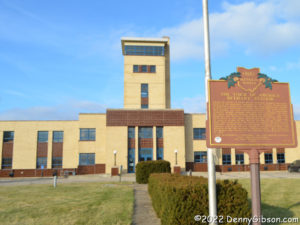 I attended Airwaves Kite Fest in 2006 and 2010. 2006 was the second of eight; 2010 was the sixth. It was a cool way to greet springtime and I wish it was still around. It was held at the Voice of America Bethany Station site where a huge array of antennas once broadcast news and more to Europe, Africa, and South America. I believe that parts of the building were open in 2006 and I took some photos inside but the entire month of April 2006 has gone missing from my photo archives. The building held the beginnings of a museum in 2006 and in 2010 it was being renovated to improve the museum operation. Since then, it has gone from being open sporadically to being open every Saturday and Sunday. I’ve driven by it countless times since 2010 but Saturday was the first time I actually did what I told myself I should do on most of those drive-bys. I made it inside where those 2006 beginnings have turned into the impressive VOA museum.
I attended Airwaves Kite Fest in 2006 and 2010. 2006 was the second of eight; 2010 was the sixth. It was a cool way to greet springtime and I wish it was still around. It was held at the Voice of America Bethany Station site where a huge array of antennas once broadcast news and more to Europe, Africa, and South America. I believe that parts of the building were open in 2006 and I took some photos inside but the entire month of April 2006 has gone missing from my photo archives. The building held the beginnings of a museum in 2006 and in 2010 it was being renovated to improve the museum operation. Since then, it has gone from being open sporadically to being open every Saturday and Sunday. I’ve driven by it countless times since 2010 but Saturday was the first time I actually did what I told myself I should do on most of those drive-bys. I made it inside where those 2006 beginnings have turned into the impressive VOA museum.
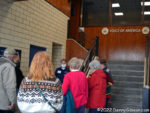
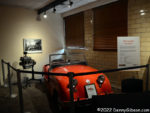
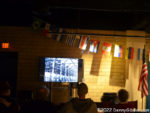 I arrived just as a volunteer was wrapping up his introduction to a sizable group which turned out to be all one family. I accompanied them past a beautifully restored Crosley Hot Shot to watch a short orientation movie.
I arrived just as a volunteer was wrapping up his introduction to a sizable group which turned out to be all one family. I accompanied them past a beautifully restored Crosley Hot Shot to watch a short orientation movie.
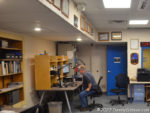
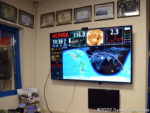 Then it was a stop at the “Ham Shack” operated by the West Chester Amateur Radio Association. Several members were present (and behind me in the photos) and we were given an overview of the operation. We also got to listen in on a conversation with a fellow in Finland while we were there.
Then it was a stop at the “Ham Shack” operated by the West Chester Amateur Radio Association. Several members were present (and behind me in the photos) and we were given an overview of the operation. We also got to listen in on a conversation with a fellow in Finland while we were there.
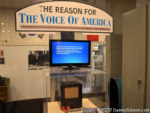
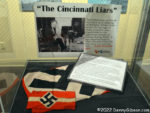 The claimed purpose of the Volksempfänger (people’s receiver) was to make radio reception affordable to the general public but its real purpose was to make the general public accessible to Nazi propaganda. Of course, it could also be used to listen to the BBC and VOA although that was quite illegal. Knowing that Hitler sometimes referred to the VOA broadcasts as “the Cincinnati liars” was and is a source of pride for the locals.
The claimed purpose of the Volksempfänger (people’s receiver) was to make radio reception affordable to the general public but its real purpose was to make the general public accessible to Nazi propaganda. Of course, it could also be used to listen to the BBC and VOA although that was quite illegal. Knowing that Hitler sometimes referred to the VOA broadcasts as “the Cincinnati liars” was and is a source of pride for the locals.


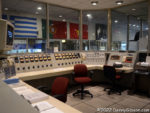 Hitler was completely wrong. For one thing, from its beginning, VOA realized that broadcasting reliable and truthful news would have more impact than broadcasting false propaganda. Secondly, although transmission was from near Cincinnati, the content was not. It came from New York and Washington on telephone lines which were routed to one of six 200-kilowatt transmitters. There were no liars involved and definitely none in Cincinnati. Before it was shut down in 1994, Bethany Relay Station saw several upgrades in transmitters and antennas. People living nearby often reported receiving the station on the plumbing in their bathrooms and the fillings in their teeth.
Hitler was completely wrong. For one thing, from its beginning, VOA realized that broadcasting reliable and truthful news would have more impact than broadcasting false propaganda. Secondly, although transmission was from near Cincinnati, the content was not. It came from New York and Washington on telephone lines which were routed to one of six 200-kilowatt transmitters. There were no liars involved and definitely none in Cincinnati. Before it was shut down in 1994, Bethany Relay Station saw several upgrades in transmitters and antennas. People living nearby often reported receiving the station on the plumbing in their bathrooms and the fillings in their teeth.
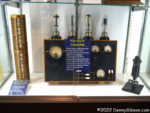
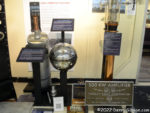
 There were multiple reasons for locating the station here including it being a safe distance from the coasts. But a possibly bigger reason was the existence of Powell Crosley and Crosley Broadcasting. After starting elsewhere at 50 watts, Crosley’s WLW (World’s Largest Wireless) was broadcasting AM from just down the road at 50,000 watts. Between May of 1934 and February of 1939, it had transmitted at an incredible 500,000 watts. Here’s a closeup and description of that pictured metal ball. Across the road from the AM station, a Crosley shortwave station was retransmitting its programming. This became WLWO (Overseas), increased power to 75,000 watts, and, as told here, begat VOA.
There were multiple reasons for locating the station here including it being a safe distance from the coasts. But a possibly bigger reason was the existence of Powell Crosley and Crosley Broadcasting. After starting elsewhere at 50 watts, Crosley’s WLW (World’s Largest Wireless) was broadcasting AM from just down the road at 50,000 watts. Between May of 1934 and February of 1939, it had transmitted at an incredible 500,000 watts. Here’s a closeup and description of that pictured metal ball. Across the road from the AM station, a Crosley shortwave station was retransmitting its programming. This became WLWO (Overseas), increased power to 75,000 watts, and, as told here, begat VOA.

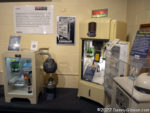
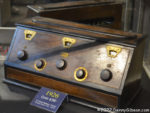 Crosley begat a lot of other stuff too. There were cars like the previously pictured Hot Shot. Radios, though, were the money makers. Some products were invented in-house and some were purchased patents. The purchased category included the Icyball and Shelvador. Although refrigerators with door-mounted shelves are commonplace these days, hardly anyone makes a fridge with a good built-in radio anymore. The Reado could deliver and print the news overnight but was done in by the Great Depression.
Crosley begat a lot of other stuff too. There were cars like the previously pictured Hot Shot. Radios, though, were the money makers. Some products were invented in-house and some were purchased patents. The purchased category included the Icyball and Shelvador. Although refrigerators with door-mounted shelves are commonplace these days, hardly anyone makes a fridge with a good built-in radio anymore. The Reado could deliver and print the news overnight but was done in by the Great Depression.
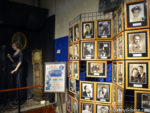
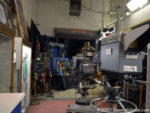
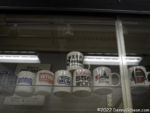 Crosley was the pioneer and long-time leader but Cincinnati’s TV and radio story goes far beyond that. The museum includes lots of memorabilia from others who spent some time living on the air in Cincinnati.
Crosley was the pioneer and long-time leader but Cincinnati’s TV and radio story goes far beyond that. The museum includes lots of memorabilia from others who spent some time living on the air in Cincinnati.

I should probably check it out… I’ve only lived near it for 12 years
Yep. You probably could have received VoA on your plumbing once upon a time.
Pingback: Voice of America Museum Revisited | Denny G's Road Trips Blog